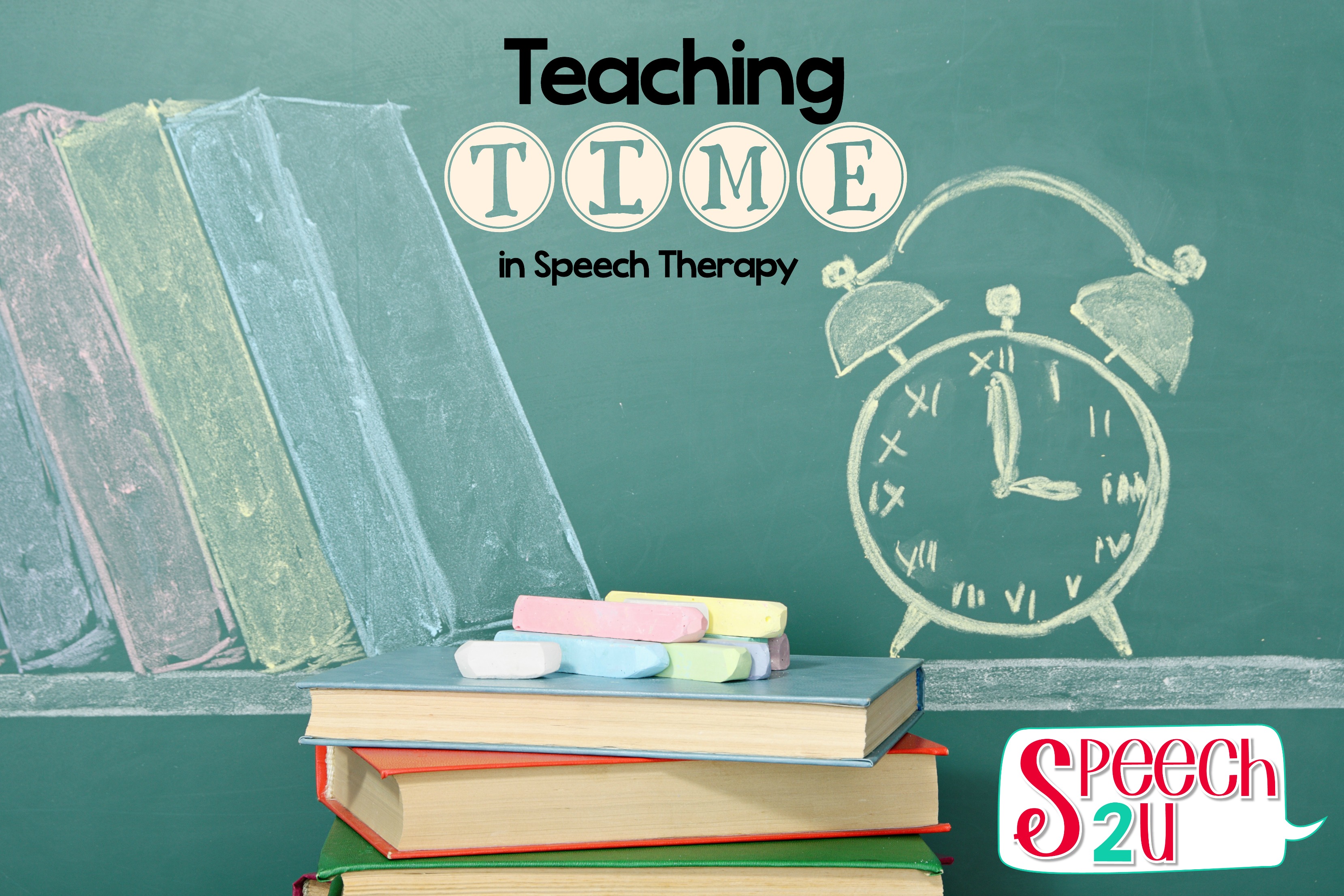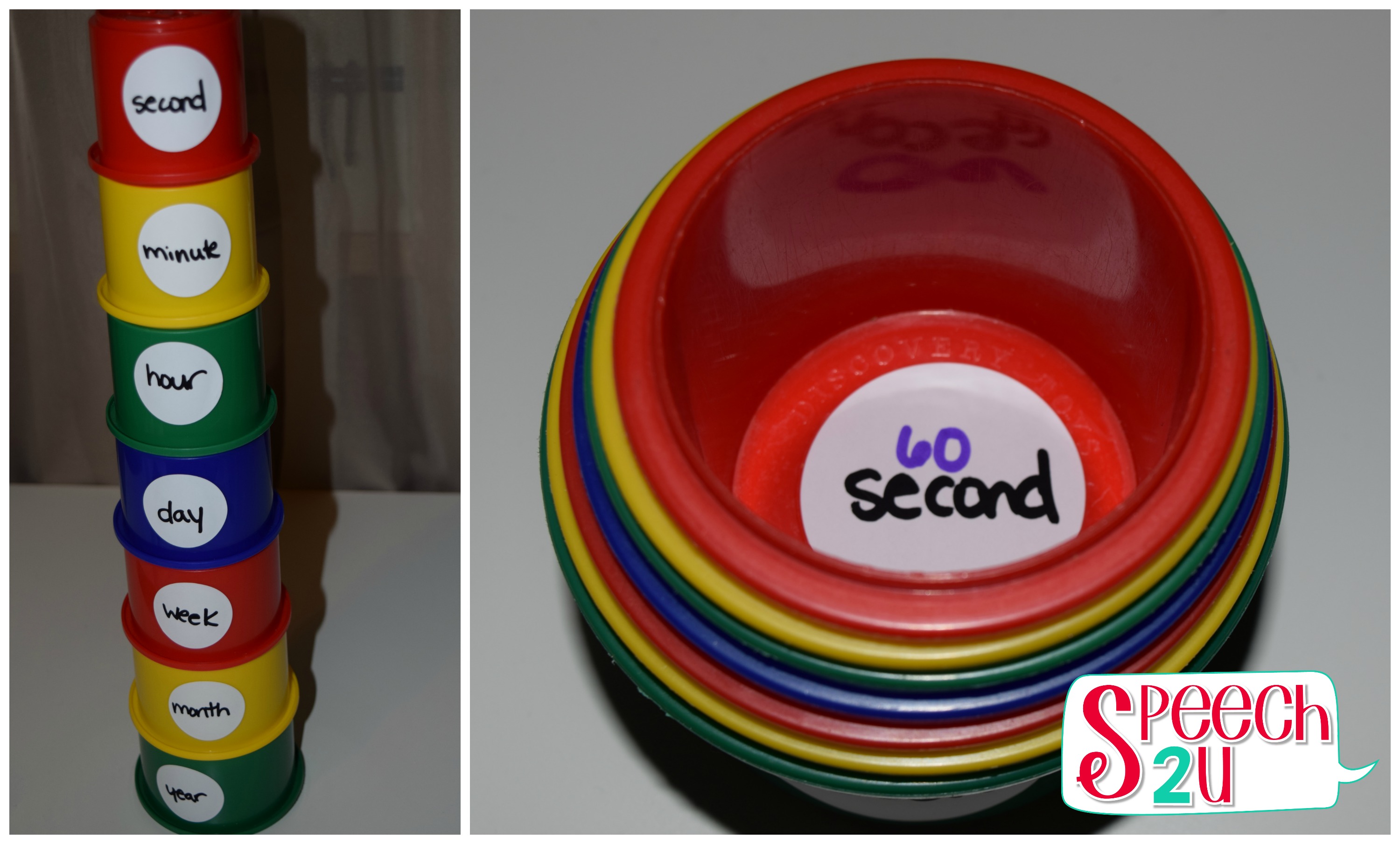I’ve been thinking about WH questions and ways to break down these questions to target within therapy. As I was working on my post about WHEN questions, I started thinking about how embedded time concepts are within this question. If students don’t have a good understanding of time, it will be difficult for them to be accurate on answering WHEN questions. Here are a few activities you can use to help your students understand time concepts.

This post contains affiliate links for your convenience. Affiliate links provide a small amount to the affiliate but don’t cost the buyer anything.
Teaching Time Concepts
When teaching WHEN questions, I often start by teaching some time concepts and/or calendar concepts. Most of our time concepts are abstract (and some of them are subjective.) For example, “in a minute” rarely means an actual minute. My eight year old reminds me of this frequently-he is always telling me that it’s been a minute and I’m still not doing what I told him I would.
Concepts such as soon or later are also difficult and dependent on what the speaker considers to be soon. It’s helpful to encourage families or teachers to use these concepts followed by as specific time to help our clients learn about how time passes and to understand these concepts.
For example, if a student asked, “When will we go to recess?” The teacher would respond by saying: “Soon. We will go to recess after you do 5 more math problems.” If we continue to model this, eventually the student will start to understand what “soon” or “in a minute” means.
Teach Sequencing
In general, children learn to understand the order of daily routines before they comprehend time words. Have your students or clients sequence the steps for daily routines such as tooth brushing, getting ready for bed or playing a game. Model and show them what they did first and what they did last to teach temporal concepts.
Teach Me Language is a book which has a variety of structured worksheet tasks to teach language skills to children with autism.
One of my favorite suggestions from this book was to sequence time words from biggest to smallest amount and vice versa. The book comes with cards you can copy and laminate to work on sorting with your student. I try to use hands on activities when I can-so I use stacking cups to use in therapy. We start by stacking the cups from most to least amounts. I like being able to put the cups inside of each other to demonstrate how 6o seconds fits exactly into one minute, and that 60 minutes fits into one hour. All of these grow to fit into a month/year etc.

Once the client is able to sequence you can also strengthen comprehension by talking about which word is “more.” (Ex. Which is more time one second or one minute?”
Use Timers
It’s difficult to teach abstract concepts, so I’m always looking for ways to make concepts more concrete. Timers are a great way to teach the passage of time. For instance, if you were saying that you were going to the library soon (or even in 5 minutes) you can set a timer so that your student can start to learn what that amount of time means and what it feels like.
Time Timers are a great tool in that they visually show how long a task will take. You could start each classroom activity by using the time timer to show how long you think an activity will take. More difficult tasks seem more manageable when you know you are almost done.
I’ll be honest. I’m a time optimist. I’d tend to set times based on what I think would be the best time vs. logically thinking through how long a task would take. I’m still holding out for a Star Trek’s transporter to get me places. It is likely that I would benefit from some executive functioning training. If you work with older students make a list of common activities (play a video game, brush your teeth, do your reading homework etc.) Have them guess how many minutes that takes. You’ll be surprised at their answers. Then have them use a stopwatch or the stopwatch app to actually time them doing the activity. Then you can work on planning their day based on the time they have available.
Use Calendars:
I buy extra calendars at the beginning of the year from the dollar store. We write down activities we’ve done in therapy on their calendar and talk about what we did last week and the our plan for the next month. We can talk about what holidays occur in different months and also talk about concepts like today, yesterday and tomorrow.
Looking for more time activities?
Check out how I teach before/after concepts in therapy.
Improve compliance by teaching first/then in therapy.
QUESTION: Do you use timers in therapy? What activities have you used to teach temporal concepts. I can’t wait to read about it!
Also, if you thought this post had some good ideas, I’d be super pumped if you could share this post on Facebook or Pinterest!




As always, great suggestions!!
Using stacking cups ( graduated sizes) is a novel way to demonstrate time concepts!
Thanks for this blog! I realized that some of my students were struggling with when questions because they didn’t have basic concepts such as the seasons. I love your stacking cups idea!
I’m glad you liked it-Thanks for stopping by!
Great suggestions! Hope you don’t mind but I shared it to my Facebook page!
That’s great! Thank you for sharing!